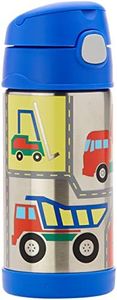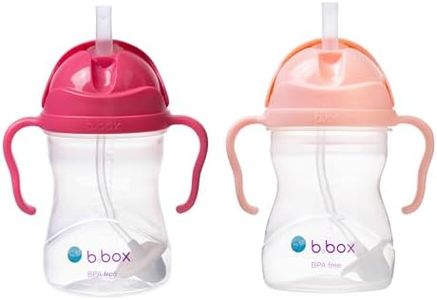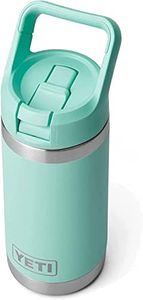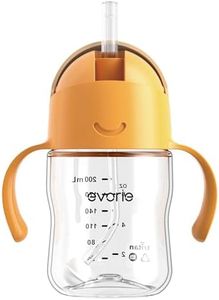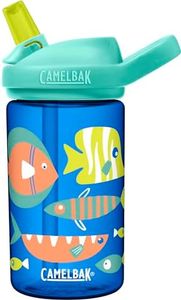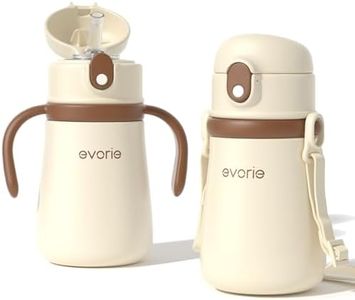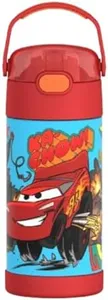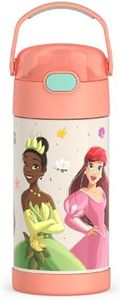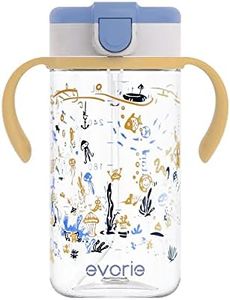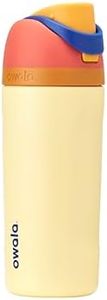We Use CookiesWe use cookies to enhance the security, performance,
functionality and for analytical and promotional activities. By continuing to browse this site you
are agreeing to our privacy policy
10 Best Toddler Water Bottles
From leading brands and best sellers available on the web.Buying Guide for the Best Toddler Water Bottles
Choosing the right water bottle for your toddler can seem daunting because it needs to be safe, easy to use, and suitable for your child’s habits. As you shop, think about what will fit into your daily routine: Do you need something that doesn’t leak in your bag, or is it more important for your toddler to easily hold and drink from the bottle? Understanding the daily context and your child’s preference will help you find a bottle that your toddler will enjoy and you’ll have confidence in using.MaterialThe material of a toddler water bottle is important because it affects safety, durability, and ease of cleaning. The most common materials are plastic, stainless steel, and glass (often with a silicone sleeve). Plastic is lightweight and affordable but must be BPA-free to ensure safety. Stainless steel is durable, less likely to retain odors, and can keep drinks cool, but it's heavier and sometimes more expensive. Glass is the safest chemically, but heavier and more breakable, so it’s best for supervised use. Consider how often you’ll use the bottle, how rough your toddler tends to be, and whether you’ll carry it on outings, then choose a material that matches your lifestyle.
Spout or Straw DesignThis refers to how your toddler drinks from the bottle—either through a spout (sippy-style), straw, or open top. Spouts are typically easier for younger toddlers, while straws can be helpful for developing oral motor skills and are good for older toddlers. Some bottles have convertible options. If your child is transitioning from a bottle or pacifier, a spout may feel more familiar. For a toddler who already drinks from cups, a straw or open design might be better. Choose the style your toddler can use independently and safely.
Leak-Proof FeaturesLeak-proof means the bottle is designed to keep liquids from spilling, even if it’s tossed or turned upside down. This is essential if you plan to carry the bottle in a bag or let your toddler roam with it. Some bottles use a built-in valve or lid mechanism to prevent leaks. While truly leak-proof designs can make drinking a bit harder for very young toddlers, they save you from messes. If your child will use the bottle mostly at home, you might be less worried about leaks, but for travel and outings, this becomes a top priority.
Size and CapacityThe size or capacity determines how much liquid the bottle holds. Most toddler bottles range from about 6 ounces to 12 ounces. Smaller bottles are lighter and easier for tiny hands to hold, while bigger bottles mean fewer refills. Think about how long you’ll be out with your child or how much water they usually drink between refills. If your toddler is just learning to use a bottle, start smaller. As they grow, a larger bottle may be more practical for all-day use.
Ease of CleaningHow easy it is to clean the bottle matters because toddler bottles often collect residue and can develop mold in hard-to-reach spots. Bottles with fewer parts, wide mouths, and dishwasher-safe materials are easier to clean. Complicated mechanisms or built-in straws can be trickier and require regular deep cleaning. If you prefer minimal fuss, choose a bottle that can be disassembled and doesn’t have too many crevices or parts.
Grip and Handle DesignGrip and handle design relates to how easily a toddler can hold and use the bottle independently. Some bottles have built-in handles or are shaped for easy gripping, perfect for younger toddlers developing their motor skills. Others have smooth bodies, which older toddlers who have better control might not mind. If you want to encourage independent drinking, look for a bottle with ergonomic handles or a textured surface for little hands.
